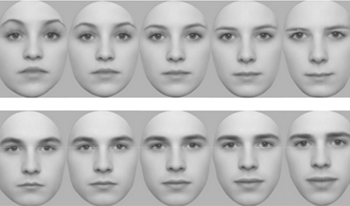References
1AnstisS. M.1974A chart demonstrating variations in acuity with retinal positionVis. Res.14589592589–9210.1016/0042-6989(74)90049-2
2ArmstrongB. A.NevilleH. J.HillyardS. A.MitchellT. V.2002Auditory deprivation affects processing of motion, but not colorCogn. Brain Res.14422434422–3410.1016/S0926-6410(02)00211-2
3ArnoldP.MurrayC.1998Memory for faces and objects by deaf and hearing signers and hearing nonsignersJ. Psycholinguistic Res.27481497481–9710.1023/A:1023277220438
4BavelierD.TomannA.HuttonC.MitchellT.CorinaD.LiuG.NevilleH.2000Visual attention to the periphery is enhanced in congenitally deaf individualsJ. Neurosci.20161–610.1523/JNEUROSCI.20-17-j0001.2000
5BavelierD.DyeM. W. G.HauserP. C.2006Do deaf individuals see better?Trends Cognitive Sci.10512518512–810.1016/j.tics.2006.09.006
6BavelierD.BrozinskyC.TomannA.MitchellT.NevilleH.LiuG.2001Impact of early deafness and early exposure to sign language on the cerebral organization for motion processingJ. Neurosci.21893189428931–4210.1523/JNEUROSCI.21-22-08931.2001
7BehrmannM.PlautD. C.2020Hemispheric organization for visual object recognition: a theoretical account and empirical evidencePerception49373404373–40410.1177/0301006619899049
8BettgerJ. G.EmmoreyK.McCulloughS. H.BellugiU.1997Enhanced facial discrimination: Effects of experience with American Sign LanguageJ. Deaf Studies Deaf Educ.2223233223–3310.1093/oxfordjournals.deafed.a014328
9BlanzV.O’TooleA. J.VetterT.WildH. A.2000On the other side of the mean: The perception of dissimilarity in human facesPerception29885891885–9110.1068/p2851
10BosworthR. G.DobkinsK. R.2002Visual field asymmetries for motion processing in deaf and hearing signersBrain Cognition49170181170–8110.1006/brcg.2001.1498
11BowdenJ.WhitakerD.DunnM. J.2019The role of peripheral vision in the flashed face distortion effectPerception489310193–10110.1177/0301006618817419
12CodinaC. J.PascalisO.ModyC.ToomeyP.RoseJ.GummerL.BuckleyD.2011Visual advantage in deaf adults linked to retinal changesPlosOne6e2041710.1371/journal.pone.0020417
13de HeeringA.AljuhanayA.RossionB.PascalisO.2012Early deafness increases the face inversion effect but does not modulate the composite face effectFrontiers Psychol.310.3389/fpsyg.2012.00124
14DundasE. M.PlautD. C.BehrmannM.2013The joint development of hemispheric lateralization for words and facesJ. Exp. Psychol.: General14234810.1037/a0029503
15DyeM. W.BavelierD.2010Attentional enhancements and deficits in deaf populations: an integrative reviewRestorative Neurol. Neurosci.28181192181–9210.3233/RNN-2010-0501
16EmmoreyK.2001The impact of sign language use on visuospatial cognitionLanguage, Cognition and the Brain: Insights from Sign Language Research243270243–70Lawrence Erlbaum Associates, Inc.Mahwah, NJ
17FarzinF.RiveraS. M.WhitneyD.2009Holistic crowding of Mooney facesJ. Vis.9181818–10.1167/9.6.18
18FinneyE. M.ClementzB. A.HickokG.DobkinsK. R.2003Visual stimuli activate auditory cortex in deaf subjects: evidence from MEGNeuroreport14142514271425–710.1097/00001756-200308060-00004
19FinneyE. M.FineI.DobkinsK. R.2001Visual stimuli activate auditory cortex in the deafNat. Neurosci.4117111731171–310.1038/nn763
20GermineL. T.DuchaineB.NakayamaK.2011Where cognitive development and aging meet: Face learning ability peaks after age 30Cognition118201210201–1010.1016/j.cognition.2010.11.002
21HarryB.DavisC.KimJ.2012Exposure in central vision facilitates view-invariant face recognition in the peripheryJ. Vis.12131313–10.1167/12.2.13
22LetourneauS. M.MitchellT. V.2011Gaze patterns during identity and emotion judgments in hearing adults and deaf users of American Sign LanguagePerception40563575563–7510.1068/p6858
23LokeW. H.SongS. R.1991Central and peripheral visual processing in hearing and nonhearing individualsBull. Psychonomic Soc.29437440437–4010.3758/BF03333964
24LomberS. G.MeredithM. A.KralA.2010Cross-modal plasticity in specific auditory cortices underlies visual compensations in the deafNat. Neurosci.13142114271421–710.1038/nn.2653
25LoomisJ. M.KellyJ. W.PuschM.BailensonJ. N.BeallA. C.2008Psychophysics of perceiving eye-gaze and head direction with peripheral vision: Implications for the dynamics of eye-gaze behaviorPerception37144314571443–5710.1068/p5896
26MartelliM.MajajN. J.PelliD. G.2005Are faces processed like words? A diagnostic test for recognition by partsJ. Vis.5666–10.1167/5.1.6
27McCulloughS.EmmoreyK.1997Face processing by deaf ASL signers: Evidence for expertise in distinguishing local featuresJ. Deaf Stud. Deaf Educ.2212222212–2210.1093/oxfordjournals.deafed.a014327
28McKoneE.MartiniP.NakayamaK.2001Categorical perception of face identity in noise isolates configural processingJ. Exp. Psychol.: Human Perception Performance2757310.1037/0096-1523.27.3.573
29McKoneE.2004Isolating the special component of face recognition: peripheral identification and a Mooney faceJ. Exp. Psychol.: Learning, Memory, Cognition3018110.1037/0278-7393.30.1.181
30MelmothD. R.KukkonenH. T.MäkeläP. K.RovamoJ. M.2000The effect of contrast and size scaling on face perception in foveal and extrafoveal visionInvestigative Ophthalmol. Visual Sci.41281128192811–9
31MelmothD. R.KukkonenH. T.MäkeläP. K.RovamoJ. M.2000Scaling extrafoveal detection of distortion in a face and gratingPerception29111711261117–2610.1068/p2945
32MerabetL.AmediA.Pascual-LeoneA.LomberS.EggermontJ. J.2005Activation of the visual cortex by Braille reading in blind subjectsReprogramming Cerebral Cortex: Plasticity Following Central and Peripheral Lesions377393377–93Oxford University PressOxford, UK
33MerabetL. B.Pascual-LeoneA.2010Neural reorganization following sensory loss: the opportunity of changeNat. Rev. Neurosci.11445244–5210.1038/nrn2758
34MitchellT. V.LetourneauS. M.MaslinM. C.2013Behavioral and neural evidence of increased attention to the bottom half of the face in deaf signersRestorative Neurol. Neurosci.31125139125–3910.3233/RNN-120233
35NevilleH. J.LawsonD.1987Attention to central and peripheral visual space in a movement detection task. II. Congenitally deaf subjectsBrain Res.405268283268–8310.1016/0006-8993(87)90296-4
36ParasnisI.SamarV. J.BettgerJ. G.SatheK.1996Does deafness lead to enhancement of visual spatial cognition in children? Negative evidence from deaf nonsignersJ. Deaf Studies Deaf Educ.1145152145–5210.1093/oxfordjournals.deafed.a014288
37PavaniF.BottariD.MurrayM. M.WallaceM. T.2012Visual abilities in individuals with profound deafness: A critical reviewThe Neural Bases of Multisensory Processes423448423–48CRC Press/Taylor & FrancisBoca Raton, FL
38PelliD. G.TillmanK. A.2008The uncrowded window of object recognitionNat. Neurosci.11112911351129–3510.1038/nn.2187
39ProkschJ.BavelierD.2002Changes in the spatial distribution of visual attention after early deafnessJ. Cognitive Neurosci.14687701687–70110.1162/08989290260138591
40ReddyL.ReddyL.KochC.2006Face identification in the near-absence of focal attentionVis. Res.46233623432336–4310.1016/j.visres.2006.01.020
41ReddyL.WilkenP.KochC.2004Face-gender discrimination is possible in the near-absence of attentionJ. Vis.4444–10.1167/4.2.4
42RetterT. L.RossionB.2016Visual adaptation provides objective electrophysiological evidence of facial identity discriminationCortex80355035–5010.1016/j.cortex.2015.11.025
43ScottG. D.KarnsC. M.DowM. W.StevensC.NevilleH. J.2014Enhanced peripheral visual processing in congenitally deaf humans is supported by multiple brain regions, including primary auditory cortexFrontiers Human Neurosci.8191–910.3389/fnhum.2014.00177
44ShalevT.SchwartzS.MillerP.HadadB. S.
45SladenD. P.TharpeA. M.AshmeadD. H.GranthamD. W.ChunM. M.2005Visual attention in deaf and normal hearing adults: Effects of Stimulus CompatibilityJ. Speech, Language, Hearing Res.48152915371529–3710.1044/1092-4388(2005/106)
46StollC.Palluel-GermainR.CaldaraR.LaoJ.DyeM. W.AptelF.PascalisO.2017
47WatanabeK.MatsudaT.NishiokaT.NamatameM.2011Eye gaze during observation of static faces in deaf peoplePLoS One6e1691910.1371/journal.pone.0016919

 Find this author on Google Scholar
Find this author on Google Scholar Find this author on PubMed
Find this author on PubMed